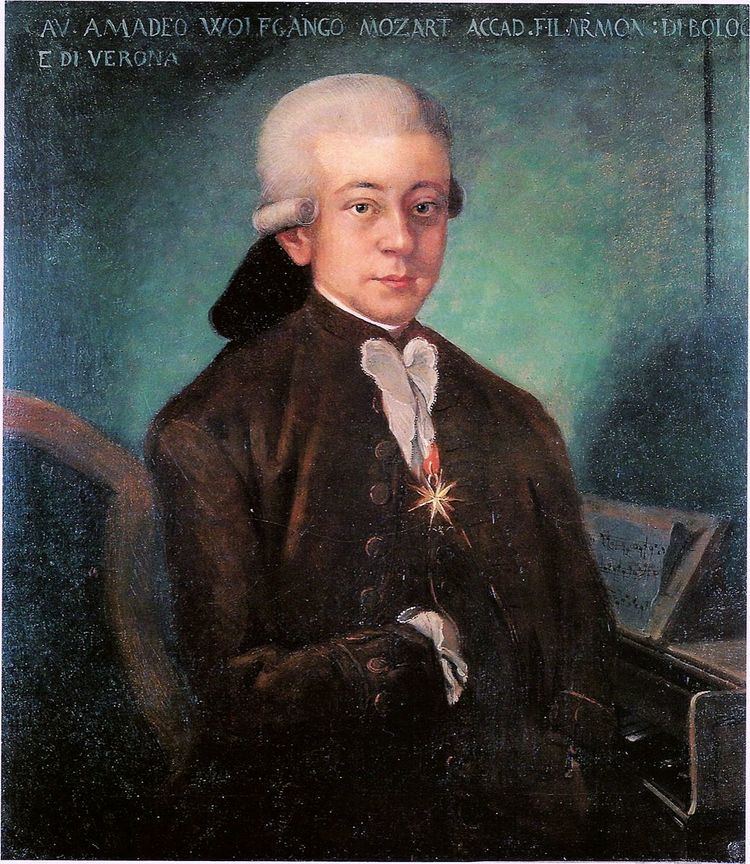Key E-flat major Composed 1777 (1777) | Catalogue K. 271 Scoring Pianoorchestra | |
 | ||
Movements Three (Allegro, Andantino, Rondo, Presto) | ||
The Piano Concerto No. 9 "Jenamy" ("Jeunehomme") in E-flat major, K. 271, by Wolfgang Amadeus Mozart was written in Salzburg in 1777, when Mozart was 21 years old.
Contents
Structure
The work is scored for solo piano, 2 oboes, 2 horns, and strings.
It consists of three movements:
- Allegro, in E-flat major and common (C) time, ~10:30
- Andantino, in C minor and 3/4 time, ~12:00
- Rondo (Presto), in E-flat major and cut time, ~10:00
The first movement opens, unusually for the time, with interventions by the soloist, anticipating Beethoven's Fourth and Fifth Concertos. As Girdlestone (1964) notes, its departures from convention do not end with this early solo entrance, but continue in the style of dialogue between piano and orchestra in the rest of the movement. Mozart wrote two cadenzas for this movement.
The second movement is written in the relative minor key. In only five of Mozart's piano concertos is the second movement in a minor key (K. 41, K. 271, K. 456, K. 482, and K. 488. K. 41 is an arrangement). Mozart wrote two cadenzas for this movement.
The third movement which opens with the solo piano is in a rondo form on a large scale. It is interrupted, surprisingly, by a slow minuet section (a procedure Mozart would repeat with his 22nd concerto, 1785, also in the key of E-flat). The work ends in the original tempo.
Reception
The work is highly regarded by critics. Charles Rosen has called it "perhaps the first unequivocal masterpiece [of the] classical style." Alfred Brendel has called it "one of the greatest wonders of the world." Alfred Einstein dubbed it "Mozart's Eroica." Cuthbert Girdlestone was not quite as effusive in his praise, however, noting that the slow movement, while a great leap forward for Mozart, was still somewhat limited and the work as a whole was not equal to the piano concertos from the composer's peak in Vienna from 1784 to 1787, nor equal to his best compositions overall.
Name
The work has long been known as the Jeunehomme Concerto. Théodore de Wyzéwa and Georges de Saint-Foix claimed that Mozart wrote the piece for a French pianist 'Jeunehomme' visiting Salzburg. This name is however incorrect; in 2004 Michael Lorenz demonstrated that the name was actually Victoire Jenamy (1749–1812), a daughter of Jean-Georges Noverre, a dancer who was one of Mozart's friends. Mozart had made Victoire Jenamy's acquaintance during his stay in Vienna in 1773.
